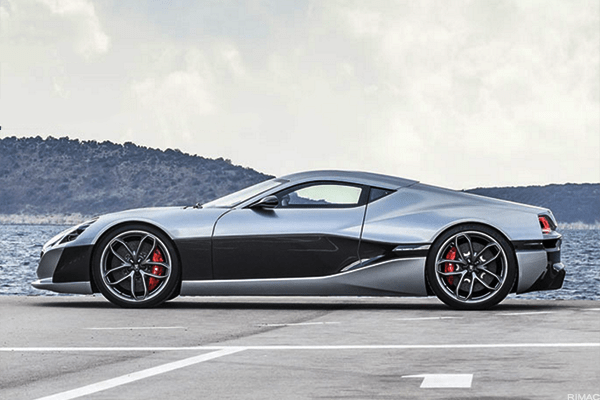
For some years now the automotive industry has revolved around Tesla and its charismatic and whimsical CEO, Elon Musk.
Each car producer is now positioning itself relative to Tesla, which has set electric vehicles as the future of passenger cars. The effort for the legacy carmakers and EV upstarts is reach investors and consumers with value and technological propositions distinguished from those of Tesla.
For a long time, one of the differentiating factors was price. Competitors were scrambling to offer affordable electric vehicles, figuring that Tesla was a premium brand for wealthy consumers and seeing an opening to reach more car buyers with cheaper models.
But the Austin automaker quashed that idea this year by lowering prices six times, so that its most popular models -- the Model 3 sedan and Model Y midsize SUV -- are much cheaper than what the competition offers, after the $7,500 U.S. federal tax credit is applied.
The Nevera Off the Line to 60 MPH: 1.74 Seconds
The other point on which some rivals try to distinguish themselves is the technology and features their models offer. And this is what the Croatian producer of electric sports vehicles, Rimac Automobili, has just done.
The Rimac Nevera supercar is the group's flagship. This hypercar, which the company unveiled in 2018 and started producing last year, has just set 23 records in a single day.
With supervision by independent third parties, the Nevera set several speed records for a car on a test track in Germany, the company said in a statement.
The Nevera, base-priced at $2.3 million, now holds the title for fastest top speed of a production electric car and the title for most performance records broken in a single day.
The EV sports car beats the record for the quickest 0-60 mph acceleration, with a time of 1.74 seconds on non-prepped asphalt. The Tesla Model S, Tesla's luxurious sedan, can go 0-60 mph in 1.99 seconds, according to its website.
The Nevera also held the previous record, which was 1.85 seconds.
The Ultimate Speed Test: 0-249-0 MPH
The Nevera also broke the record for what is seen as the most important test of a supercar: the 0-249-0 mph. It's a test of acceleration, aerodynamics, top speed and stopping power. The new record time is 29.93 seconds, which is more than a second quicker than the previous record.
Here is the list of 23 records broke by the hypercar as verified by third parties RaceLogic and Dewesoft.
- 0-60 mph 1.74s 1.74s
- 0 -100 km/h 1.82s 1.81s
- 0-200 km/h 4.42s 4.42s
- 0-300 km/h 9.23s 9.22s
- 0-400 km/h 21.32s 21.31s
- 100-200 km/h 2.59s 2.59s
- 200-300 km/h 4.81s 4.79s
- 200-250 km/h 2.00s 2.00s
- 100-0 km/h (distance) 29.12 m 28.96 m
- 0-100-0 km/h 4.03s 3.99s
- 0-200-0 km/h 8.85s 8.86s
- 0-300-0 km/h 15.68s 15.70s
- 0-400-0 km/h 29.94s 29.93s
- ¼ mile 8.26s 8.25s
- 1/8 mile 5.46s 5.44s
- ½ mile 12.82s 12.83s
- Standing mile 20.62s 20.59s
- 0-100 mph 3.23s 3.21s
- 0-120 mph 4.19 s 4.19s
- 0-130 mph 4.74s 4.75s
- 0-250 mph 21.89 s 21.86s
- 60-130 mph 2.99 s 2.99s
- 0-200 mph 10.86 s 10.86s
"I am proud to say that the car we’ve created can get to 400km/h and back to 0 in less time than it took the McLaren F1 to accelerate up to 350km/h," said Mate Rimac, founder and CEO of Rimac Automobili, in a statement. "And not only that, but it can do it again and again, breaking every other performance record in the process."
He added: "If you had a Nevera and access to a track, you could do it too."
The carmaker said that the Nevera's speed comes from its advanced battery system, powertrain and software.
"The front and rear powertrains – each composed of two individual motors – provide power to each wheel individually. At the rear, a 1MW dual inverter enables 900Nm and 470kW per motor, while an entirely bespoke front powertrain is designed to deliver optimum power and control," the company argued.
The Rimac Nevera is limited to 150 units and it is currently being built on the outskirts of Zagreb, with deliveries ongoing to customers all over the world, according to Rimac which employs more than 2,000 people.







